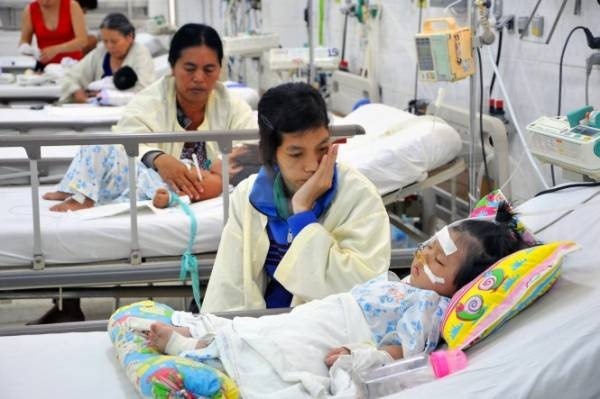 Society
Society

The number of people, especially children, seeking treatment for the seasonal flu virus at hospitals has been on the rise. Luckily, no new influenza virus has been found so far, the Ministry of Health has said.
 |
| More than 300 pediatric patients were diagnosed with seasonal flu at the National Hospital of Paediatrics in the first two weeks of the year. — Photo vtv.vn |
HÀ NỘI — The number of people, especially children, seeking treatment for the seasonal flu virus at hospitals has been on the rise. Luckily, no new influenza virus has been found so far, the Ministry of Health has said.
In many central and provincial hospitals, the number of patients suffering from flu has increased due to the cold weather with high humidity—favourable conditions for the development of the flu virus. In Việt
More than 300 pediatric patients were diagnosed with seasonal flu at the National Hospital of Paediatrics in the first two weeks of the year. Most were hospitalised with high fever, sneezing, runny nose, sore throat or bronchitis.
In Hải Dương Province Children’s Hospital, as many as 300 patients were hospitalised for flu. On average, ten patients have suffered from influenza flu type A every day since early last month.
Dr Nguyễn Đức Hùng, deputy director of Hải Dương Province Children’s Hospital, said that weather changes increased the proportion of patients infected with influenza.
Associate Professor Trần Đắc Phu, director of the Ministry of Health’s Preventive Medicine Department, said that the country recorded between one million and 1.8 million cases of influenza annually, mainly due to strains of influenza flu type A/H3N2, A/H1N1 and B in the past ten years.
The number of patients this year was not significantly higher than in previous years.
Luckily, no new strains of influenza virus, which could increase toxicity or cause resistance to current influenza viruses, have been detected so far, he said.
Until now, Việt
Last year,
However, Phu said that Việt Nam is located in the hotspot of
The flu virus type A was the most frequently mutated type that could develop into dangerous new strains. Globally, some types of influenza A have caused pandemics.
To actively monitor the circulation and variability of influenza virus strains in the country, the Ministry of Health has implemented the national influenza surveillance system and established two national flu centres at the National Institute of Hygiene Epidemiology and
The two centres are capable of testing for the detection of influenza viruses, he said. — VNS